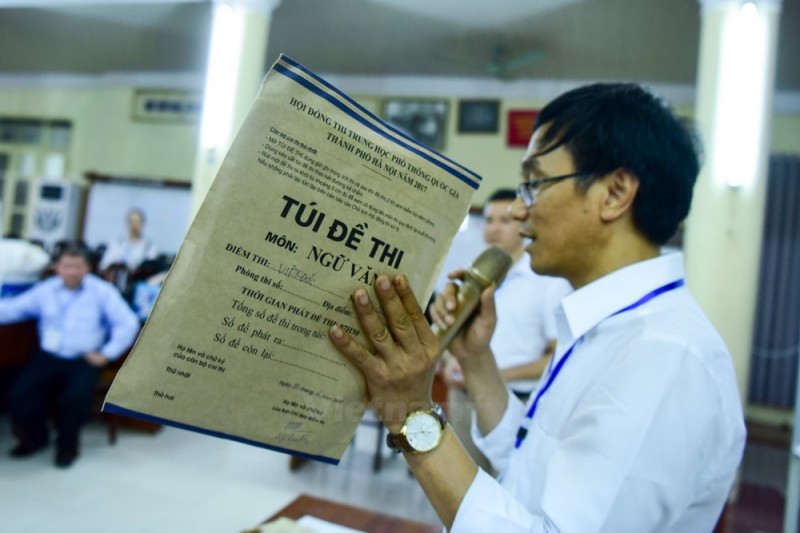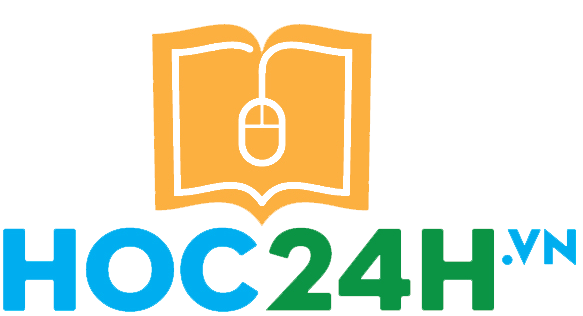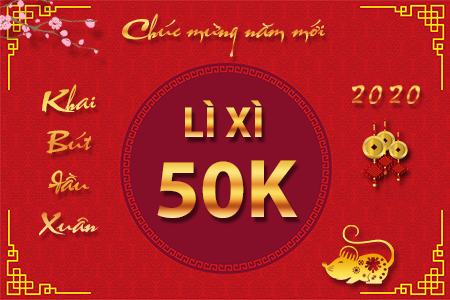Kinh nghiệm học
Thi THPT quốc gia: Phương pháp làm bài đọc hiểu tiếng Anh
Chia sẻ với học sinh cô giáo tiếng Anh Phạm Liễu cho biết, thi tiếng Anh phần đọc hiểu là một kĩ năng mà chúng ta hoàn toàn có thể chinh phục được thông qua rèn luyện. Trong quá trình ôn thi, các em cần cải thiện vốn từ vựng, đọc thật nhiều để không quên từ đã học và học thêm từ mới.

Cô giáo Phạm Liễu
Dưới đây là chia sẻ của cô giáo Phạm Liễu về phương pháp làm bài đọc hiểu tiếng Anh:
8 kỹ năng làm bài hiệu quả
1. Trước hết hãy đọc câu hỏi. Đọc câu hỏi trước, chưa vội đọc các lựa chọn trả lời. Khi các em đã biết được kiểu câu hỏi phải trả lời thì sẽ dễ dàng tìm ra câu trả lời hơn
2. Đọc lướt hay đọc nhanh bài đọc: đừng đọc từng chữ hay đọc một cách chi tiết, đọc nhanh để tìm ý chính và cấu trúc chung của bài. Bằng cách đọc lướt các em sẽ nắm được nội dung mà bài đọc muốn đề cập.
3. Khi làm bài đọc hiểu, nếu thấy bài văn quá dài các em đừng vội nản lòng , đọc lướt từng đoạn nhỏ và quan trọng là áp dụng 1 kĩ thuật GẠCH CHÂN TỪ KHÓA.
4. Sau khi đã hoàn tất việc đọc lướt qua từ khóa giờ là lúc các em quay lại đọc lại để nắm chắc ý.
5. Để những câu khó lại sau cùng. Chúng ta vẫn làm bài theo các nguyên tắc dễ làm trước, khó làm sau. Và làm tới đâu phải chắc chắn tới đó. Các em nên trả lời các câu hỏi về nội dung chi tiết của đoạn, câu hỏi về từ vựng… rồi hãy làm câu nói về nội dung chính của cả bài. Đi từ chi tiết đến tổng hợp sẽ chính xác hơn.
6. Đoán khi bạn không biết câu trả lời: khi đoán, trước hết hãy dùng phương pháp loại trừ
7. Trả lời mọi câu hỏi: đừng bỏ sót bất kì câu hỏi nào dù bạn ko làm được, nếu ko còn đủ thời gian, hãy sử dụng kĩ thuật đoán bằng chữ cái cho các câu còn lại.
8. Nếu còn thời gian sau khi làm xong bài thi, hãy đọc bài đọc một lần nữa, chú ý vào các câu, các đoạn bạn chưa hiểu lắm và xem lại các đáp án mình đã lựa chọn.
Đọc hiểu là một kĩ năng mà chúng ta hoàn toàn có thể chinh phục được thông qua rèn luyện. Trong quá trình ôn thi, các em cần cải thiện vốn từ vựng, đọc thật nhiều để không quên từ đã học và học thêm từ mới. Quan trọng hơn tăng cường kiến thức cho mình, có thể các em sẽ gặp những vấn đề tương tự như vậy trong bài thi.
Luyện tập dạng bài đọc hiểu
1. Đọc kỹ bài khoá sau và chọn phương án đúng (ứng với A hoặc B, C, D)
David Hempleman Adams is an explorer and adventurer. In April 1984, he walked through Northern Canada to the North Pole. He walked 400 kilometers in 22 days. He was 27 years old when he did it. David was the first person to walk to the North Pole by himself. Other people travelled to the North Pole before David but they had a sled and a dog team. David didn't have a dog team. David was a brave man to go on this adventure on his own. He was also a lucky man because the bear and the icy water didn't kill him.
Câu 1: Which of the following best expresses the main idea of the passage?
A. David drove to the North Pole.
B. No one travelled to the North Pole before David.
C. David was the first person to walk to the North Pole alone.
D. It was very cold in the North Pole.
Câu 2: David travelled to the North Pole with..................... .
A. a group of people B. a dog team
C. another person D. nobody
Câu 3: Which of the following is NOT true?
A. He was killed by the bear.
B. He walked to the North Pole alone.
C. He walked 400 kilometres.
D. He was 27 years old when he travelled to the North Pole.
Câu 4: The word “sled” means ____ .
A. a person B. a vehicle
C. a dog D. food
Câu 5: Which of the following is the best title of the passage?
A. A Lucky Man B. A Walk to the North Pole
C. Without a Dog Team D. Icy Water
2. Đọc đoạn văn và trả lời câu hỏi:
Americas foods began to affect the rest of the world. American emphasis on convenient and rapid consumption is best represented in fast foods such as hamburgers, French fries, and soft drinks. By the 1960s and 1970s fast foods became one of Americas strongest exports as franchises for Mc Donalds and Burger King spread through Europe and other parts of the world, including Russia and China. Traditional meals cooked at home and consumed at a leisurely pace _ gave way to quick lunches and dinners eaten on the run as other countries imitated American cultural patterns.
By the late 20th century Americans had become more conscious of their diets, eating more poultry, fish and vegetables, and fewer eggs and less beef. Cooks began to rediscover many world cuisines in forms closer to their original. In California, chefs combined fresh fruits and vegetables available with ingredients and spices borrowed from immigrant kitchens to create an innovative cooking style that was lighter than traditional French, but more interesting and varied than typical American cuisine. Along with the states wines, California cuisine took its place among the acknowledged forms of fine dining.
6. Fast foods such as hamburgers, French fries, and soft drinks ………
A. are traditional meals of the US people.
B. are popular because of their nutritious values.
C. became more popular than meals cooked at home in China.
D. became popular with other European and Asian countries.
7. Which of the following is similar in meaning to the word cuisine?
A. cooking B. style of cooking C. cookery D. cook
8. What is the main idea of the first paragraph?
A. Americas cuisine used to have an influence on many countries.
B. Fast foods became one of Americas strongest exports.
C. Mc Donalds and Burger King are American food suppliers successful in Europe.
D. Traditional meals cooked at home and consumed at a leisurely pace are not common in the US.
9. Which of the following statements is true?
A. By the late 20th century, fast foods had lost their popularity in the USA
B. Americans used to eat more poultry, fish, and fresh fruits and vegetables than they do now.
C. Cooking styles of other countries began to affect Americas by the late 20th century.
D. Fewer eggs and less beef in American diet made them fitter.
10. An innovative style of cooking was created in California ………..
A. to attract more immigrants to the state.
B. and made the states wines well-known.
C. by borrowing recipes from immigrant kitchens.
D. by combining the local specialities with immigrants spices.
3. Đọc đoạn văn và trả lời câu hỏi
Today the most universally known style of trousers for both men and women is jeans; these trousers are worn throughout the world on a variety of occasions. Also called levis or denims, jeans have an interesting story.
The word jeans is derived from the name of the place where a similar style of pants developed. In the 16th century, sailors from Genoa, Italy, wore a unique tyle of cotton trousers. In French, the word for the city of Genoa and for the people from that city is Genes, this name became attached to the trousers and developed into the word jeans.
Similar to the word jeans, the word denim is also derived from a place name. In the 17th century, French sailors began making trousers out of a specialized type of cloth that was developed in the city of Nimes, France and was known serge de Nimes. This name eventually developed into denim, the material which jeans are made and an alternative name for these popular pants.
The word levis came from a person. In the 19th century, Levis Strauss tried to sell heavy canvas to miners taking part in the hunt for gold in northern California. He intended for this canvas to be used by miners to make heavy-duty tents. This first attemp was a failure but he later found success when he used the canvas to make indestructible pants for the miners. He changed the fabric from brown canvas to blue denim, creating a style of pants that long outlived him and is now referred to by his name.
11. All of the following are mentioned in the passage about Genoa except that it ………..
A. was the source of the word jeans B. is in Italy
C. has a different name in French D. is a landlocked city
12. The word denim was most probably derived from …….
A. 2 French words B. 2 Italian words
C. 1 French word and 1 Italian word D. 3 French words
13. All of the following are mentioned in the passage about Levis Strauss except that he ………..
A. failed to sell heavy canvas to miners to make tents
B. dyed the cloth from brown to blue
C. made his success in creating a new style of trousers
D. was an immigrant to America
14. To develop the pants for which he became famous, Levis did which of the following?
A. He studied tailoring in Nimes
B. He used an existing type of material
C. He experimented with brown denim
D. He tested the pants for destructability
15. This passage is developed by………
A. mentioning an effect and its causes
B. explaining history with 3 specific cases
C. demonstrating the sides of an issue
D. developing the biography of a famous person
Cô Giáo Phạm Liễu
(Dân trí)
tin liên quan
-
 Nên dùng bút chì loại nào để tô trắc nghiệm thpt quốc gia 2019
13/06/2019
Nên dùng bút chì loại nào để tô trắc nghiệm thpt quốc gia 2019
13/06/2019 -
 5 tuyệt chiêu giúp bạn lấy điểm tuyệt đối môn Ngữ văn trong kì thi THPT Quốc gia
26/03/2019
5 tuyệt chiêu giúp bạn lấy điểm tuyệt đối môn Ngữ văn trong kì thi THPT Quốc gia
26/03/2019 -
 Các dạng câu hỏi thường gặp trong đề thi THPT quốc gia môn Lịch sử mà thí sinh nên biết
02/12/2018
Các dạng câu hỏi thường gặp trong đề thi THPT quốc gia môn Lịch sử mà thí sinh nên biết
02/12/2018 -
 Thủ khoa tỉnh Bình Thuận phần lớn nhờ tự học
18/07/2018
Thủ khoa tỉnh Bình Thuận phần lớn nhờ tự học
18/07/2018













